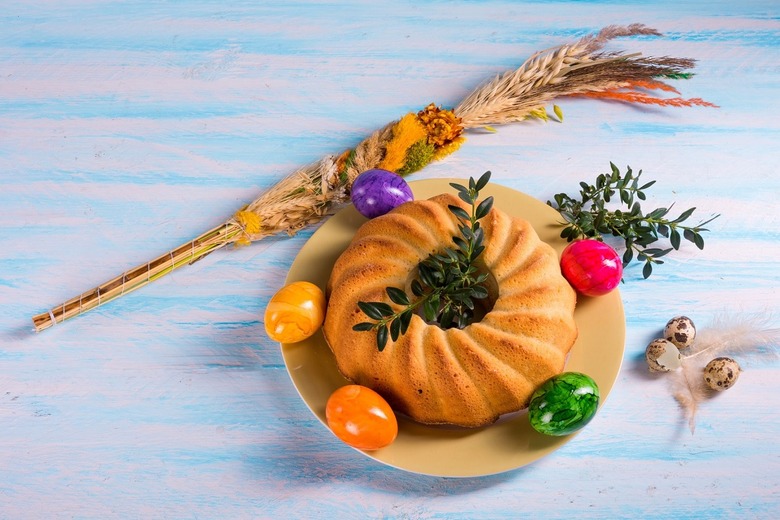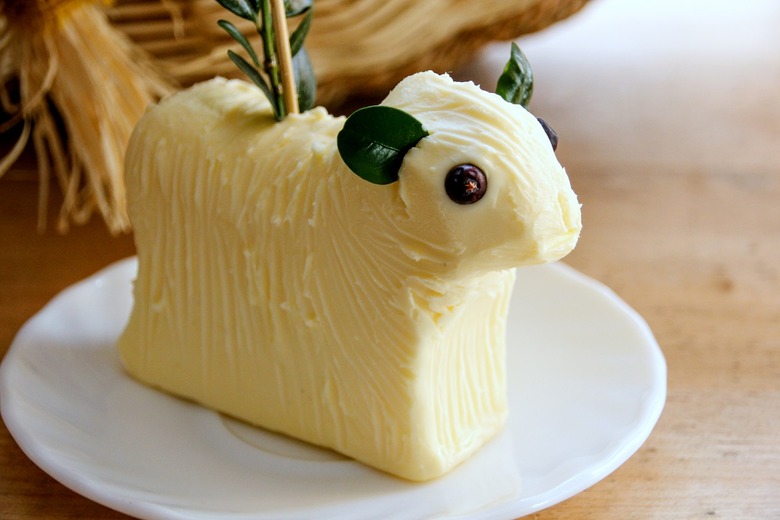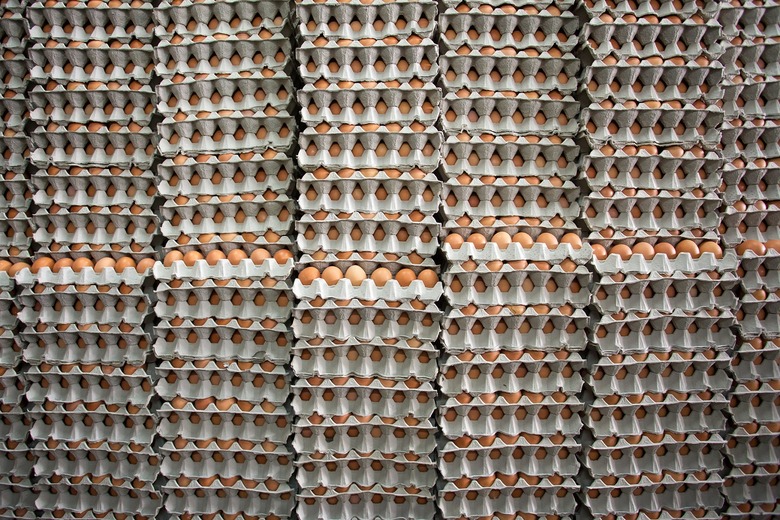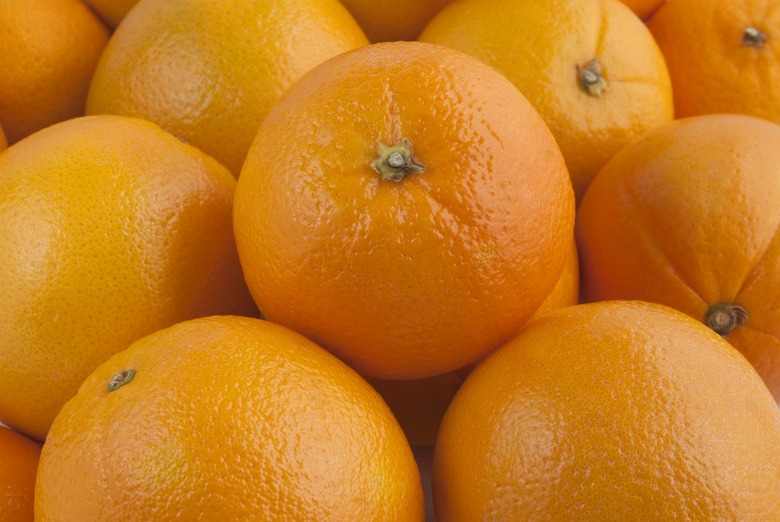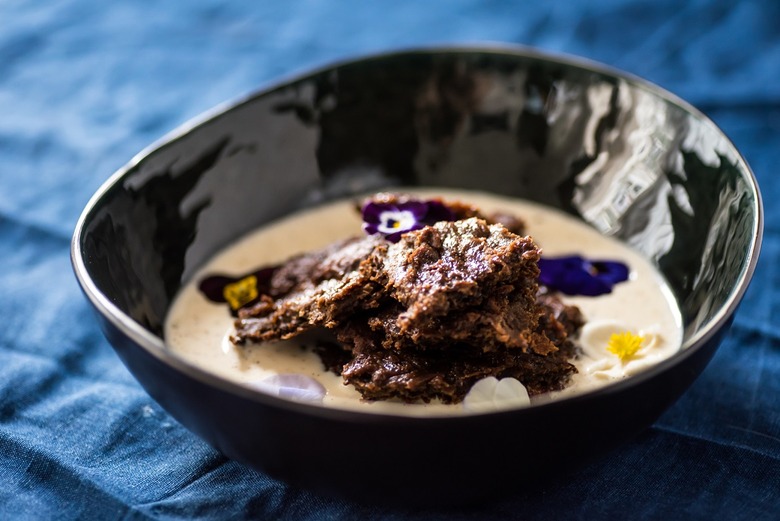8 Interesting Easter Food Traditions From Around The World Gallery
Easter is a time full of delicious treats, no matter where in the world you're celebrating. Food is a big part of this springtime holiday, from the traditional ham to the commercialized marshmallow Peeps. Easter traditions vary, however, and the Eastertime treats and traditions found in the United States are often entirely different from those found throughout the globe.
Whereas Easter egg hunts and rolls reign supreme in American culture, you may find more whimsical traditions such as cheese rolling or the passing out of oranges in certain villages in Europe. The iconic chocolate bunny has a marsupial cousin Down Under, and rather than crème eggs or jelly beans, you're more likely to find unfamiliar yet very regional desserts outside of the U.S. Easter is celebrated worldwide, yet different cultures have their different takes on the religious holiday, resulting in these very interesting Easter food traditions around the world.
Matt Sulem contributed to this article.
Butter Lamb (Eastern Europe)
Many Catholics in Russia, Poland, and Slovenia, will have a butter lamb, or buttered lamb, as part of their traditional Easter meal. This is not an actual lamb that's been buttered, but rather a hunk of butter sculpted by hand or with a mold into the shape of a lamb. Peppercorns are stuck on for eyes, and a white banner with a red cross will also often be fastened to its back with a toothpick. The butter lamb symbolizes the beginning of spring as well as the sacrifice of Jesus Christ, the "Lamb of God."
Cheese Rolling (Panicale, Italy)
Similar to the Cooper's Hill Cheese-Rolling and Wake competition in England, the Ruzzonole is a sporting event in the Umbrian town of Panicale in which participants roll a nine-pound wheel of Pecorino cheese along the village walls. Part bowling and part yo-yo, the game involves launching the wheel of cheese using a leather strap with a wooden handle wrapped around it. Officials chase after the cheese to mark where the cheese veers off course or falls, and the winner is the person who rolls the cheese throughout the entire course with the lowest number of strokes, thus earning the privilege of taking the wheel of cheese home.
Chocolate Bilbies (Australia)
In Australia, where rabbits are a notorious invasive species, many people celebrate with the Easter Bilby instead of the Easter Bunny. A small marsupial native to Australia, the bilby has large ears and a long, pointed nose. It's also endangered, and in an effort to raise both money and awareness towards saving bilbies and other native Australian fauna, the Easter season sees chocolate bilbies, rather than bunnies, and other bilby-related merchandise in stores throughout Australia.
A Giant Omelette (Haux, France)
Every Easter Monday, the French village of Haux gets together in their main square to cook a giant omelette. Made up of over 4,500 eggs, the omelette feeds up to 1,000 people and is usually finished in time for lunch.
Hocktide (Hungerford, England)
The festival of Hocktide occurs in the English town of Hungerford over the course of several days, but the main celebrations are on the Tuesday of the second week after Easter, known as Tutti Day. A Hocktide Council, which is elected the previous Friday, will appoint two Tutti Men who carry Tutti Poles, which are wooden staffs decorated with flowers and a cloved orange (thought to stem from a time when people were less hygienic and therefore less pleasant smelling), and accompany the Orange Man. The Orange Man carries a sack filled with oranges and is also accompanied by Tutti Wenches who give out the oranges as well sweets to people in exchange for kisses or pennies.
Mämmi (Finland)
Made with water, rye malt, rye flour, molasses, and orange zest, mämmi is a Finnish dessert that's traditionally eaten for Easter. It takes quite a while to make, as preparation can take hours and after it's been baked, the mämmi is traditionally chilled for a few days before consumption. It is traditionally served with either cream and sugar or milk.
Murder Mystery Milk Cartons (Norway)
In Norway, it's traditional for families to read or watch murder mysteries together at Eastertime. Not only do TV stations and publishers in Norway coordinate their programming for these activities, but milk companies actually make special cartons with mini murder mysteries printed on them. People are encouraged to submit their answers to the mystery crime on the carton for prizes.
No Baking for Men (Poland)
Another Easter tradition in Poland doesn't have to do with the actual food itself, but rather its preparation. In Poland, men don't help prepare babka, the customary Easter bread, because an old wives' tale says if any dough gets in their mustaches, they will turn grey or the bread won't rise. Of course, clean-shaven men are probably safe, but we'd wager that an awful lot of Polish men mysteriously start growing facial hair around Easter time. For more global Easter traditions, check out these Good Friday traditions around the world.
More from The Daily Meal:
Must-Visit Spring Festivals Around the World
The Ultimate Guide to Creating World-Class Easter Eggs
11 Homemade Easter Treats That Put Premade Baskets to Shame
